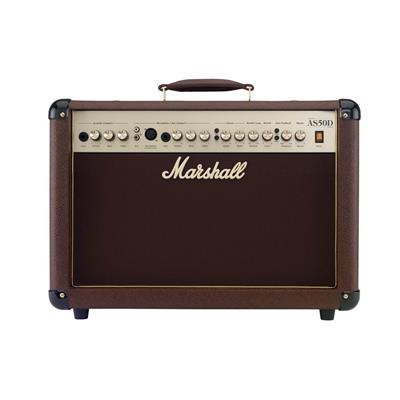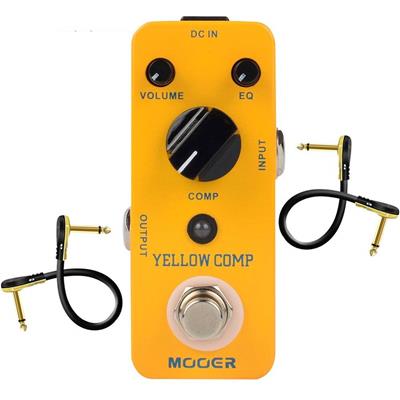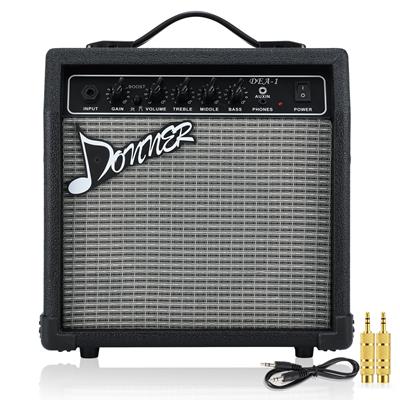| Build Quality: |  |
| Hardware: |  |
| Electronics: |  |
| Sound: |  |
| Value: |  |
| Average: |  |

Pros:
- Excellent response to the pick-ups
- Wide range of sounds and features
- Easily configurable
- Amazing clean tones
Cons:
- Not the most powerful acoustic guitar amp out there
One of the most common questions asked in terms of acoustic guitar amplifiers is the following: do you even need one? The answer to this query is not that simple, since it requires the analysis of many different factors. However, the biggest denominator in this subject is the way you perceive sound quality. If you are someone who pays a lot of attention to details and wants everything to be perfect, then you should definitely consider a dedicated amp for your acoustic guitar.
Even if you are a beginner and are just starting to figure out what you want, it is still better to get something that gets on with your instrument like a house on fire. Anyway, today we are going to discuss Marshall Acoustic Soloist AS50D, one of the best acoustic guitar amps on the market. Let’s get started.
Features
As with any other model produced by Marshall, the features here are precise and straight to the point. The brand has kept in mind the nature of the acoustic instruments and has designed this amp accordingly. Acoustic Soloist AS50D has two 8” speakers and a high-fidelity polymer dome tweeter, as well as 50 watts of power output. It has an in-built limiter, which makes sure that your sound does not get distorted even when the unit is used at its maximum capacity.
It has two channels with dedicated inputs: Acoustic Instrument and Microphone/Aux. This little fella can handle your magnetic or piezo pick-ups perfectly to guarantee the best performance from your acoustic treats. Acoustic Soloist AS50D has an onboard Chorus (which can be utilized on both channels) and Reverb, as well as an effects loop for your pedals. This amplifier strives to solve the problem of feedback by incorporating anti-feedback features in its system. With a notch filter, phase, and frequency control you have the ability to eliminate any unwanted background noise.
Acoustic Soloist AS50D has two inputs for your instrument (guitar, keyboards, drums and etc.), a single Phono auxiliary input and one XLR input, a single microphone input, a footswitch jack for connecting the foot controller, a Line Out jack for recording, DI output for connecting the PA system or any other similar equipment, and finally, send and return jacks for your effects loop.
Controls
To lay out all these features intelligently, Marshall decided to sort everything out in sections, all of which have their names and dedicated knobs. This way you can make out what is what easily, without having to get closer and read the names of the controls. Let’s keep on being meticulous and find out, what each of the encoders can do.
The acoustic Instrument Channel section is comprised of Volume, Bass, and Treble controls. Volume, of course, sets the level of the said channel and contributes to creating even sound, while Bass and Treble control lower and higher frequencies, respectively. The microphone/Aux Channel section has the same knobs (Volume, Bass, and Treble) with similar functionalities. The only difference is that they take care of the second channel. The Master Section is packed with everything else. Chorus Assign Switches allow you to choose the channel you want the effect to be added to, Chorus Speed adjusts the rate of frequency change of the effect, while Chorus Depth modifies the amount of frequency shift.
Then we have Reverb Balance, which controls the balance of the reverb and parallel loop between the two channels, and Reverb Level, which sets the volume of the effect. Next, come the feedback controls: The phase switch reduces the low-end feedback, while Notch Filter cuts by 10dB the frequencies that you choose with the Frequency Control. Last but definitely not least, we have the Master Volume, which modifies the overall level of the output.
Marshall AS50D Sound
Acoustic Soloist AS50D has the kind of sound that you will only hear from Marshall. Every tone it produces has a unique flavor, as well as transparency and precision. This amplifier is great for occasional or frequent gigging, handling small and mediocre venues. The ability to connect it to the PA allows you to use it even on the bigger stages. Both channels treat your acoustic instruments perfectly, accentuating their best qualities.
The separate EQs enable you to adjust various parameters of your sound and take your performance to a whole new level. The chorus is quite deep, thick, and distinctive, and thus matches your acoustic sound pretty damn well. And when it comes to reverb, this little fella can shine through the mix as well. It depends on your preferences whether you will use these two or not, however, you always have the option to employ your effects pedals using the loop.
The feedback control is a great addition since it guarantees the clarity of your tone. One of the best things about Acoustic Soloist AS50D is that it can get quite loud without getting distorted or developing some sort of buzz. For the price, we could not dare to ask for more.
Conclusion
What else could be said about the Acoustic Soloist AS50D? Nothing much, except for emphasizing its best qualities. This bad boy is quite versatile in terms of features and rather powerful when it comes to sound. Its response to the acoustic pick-ups is spectacular, which is one of the most significant parameters when talking about such amplifiers. All in all, Acoustic Soloist AS50D can create some of the best acoustic sounds out there, which means you have to try it out yourself. Good luck!






